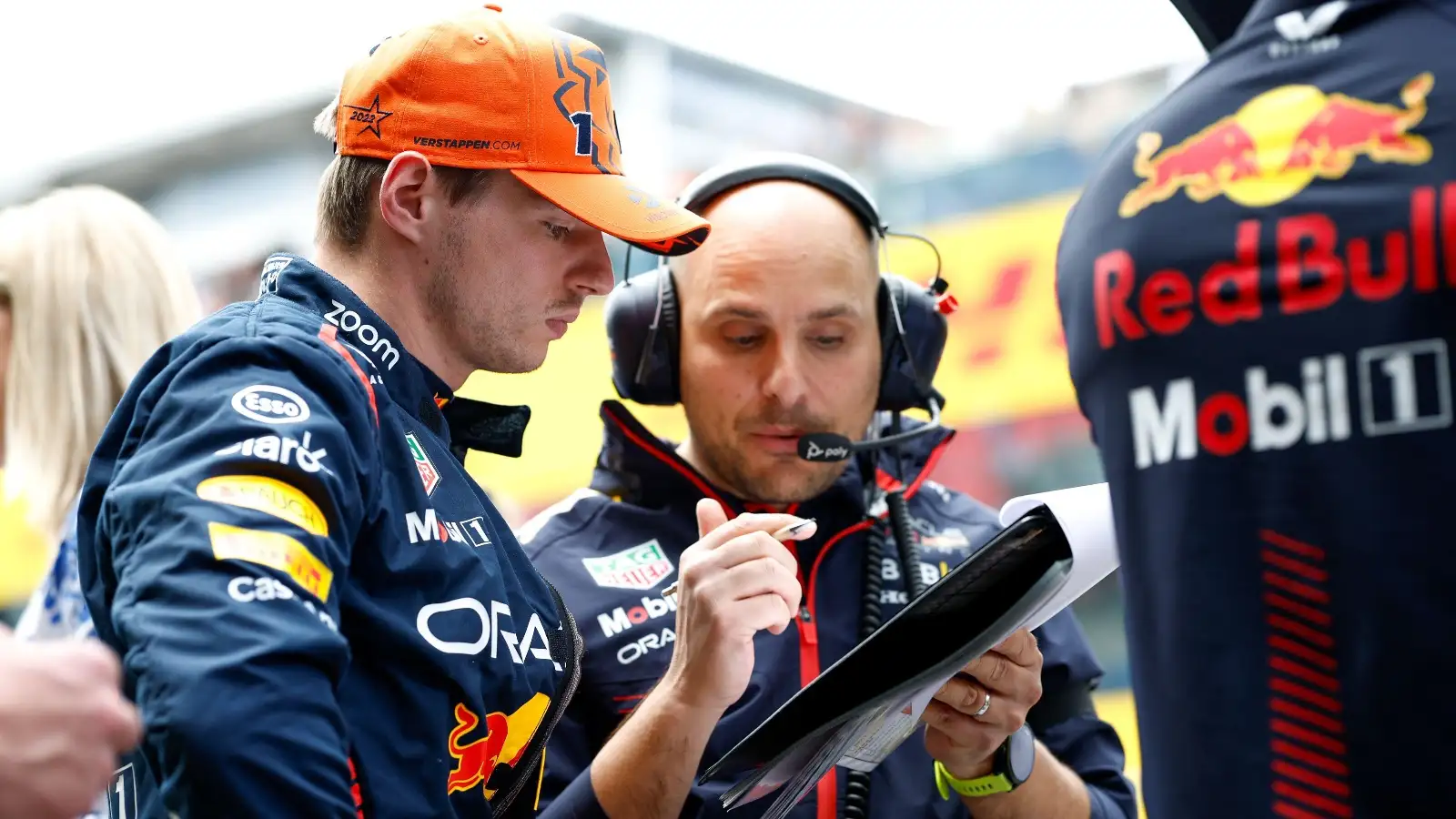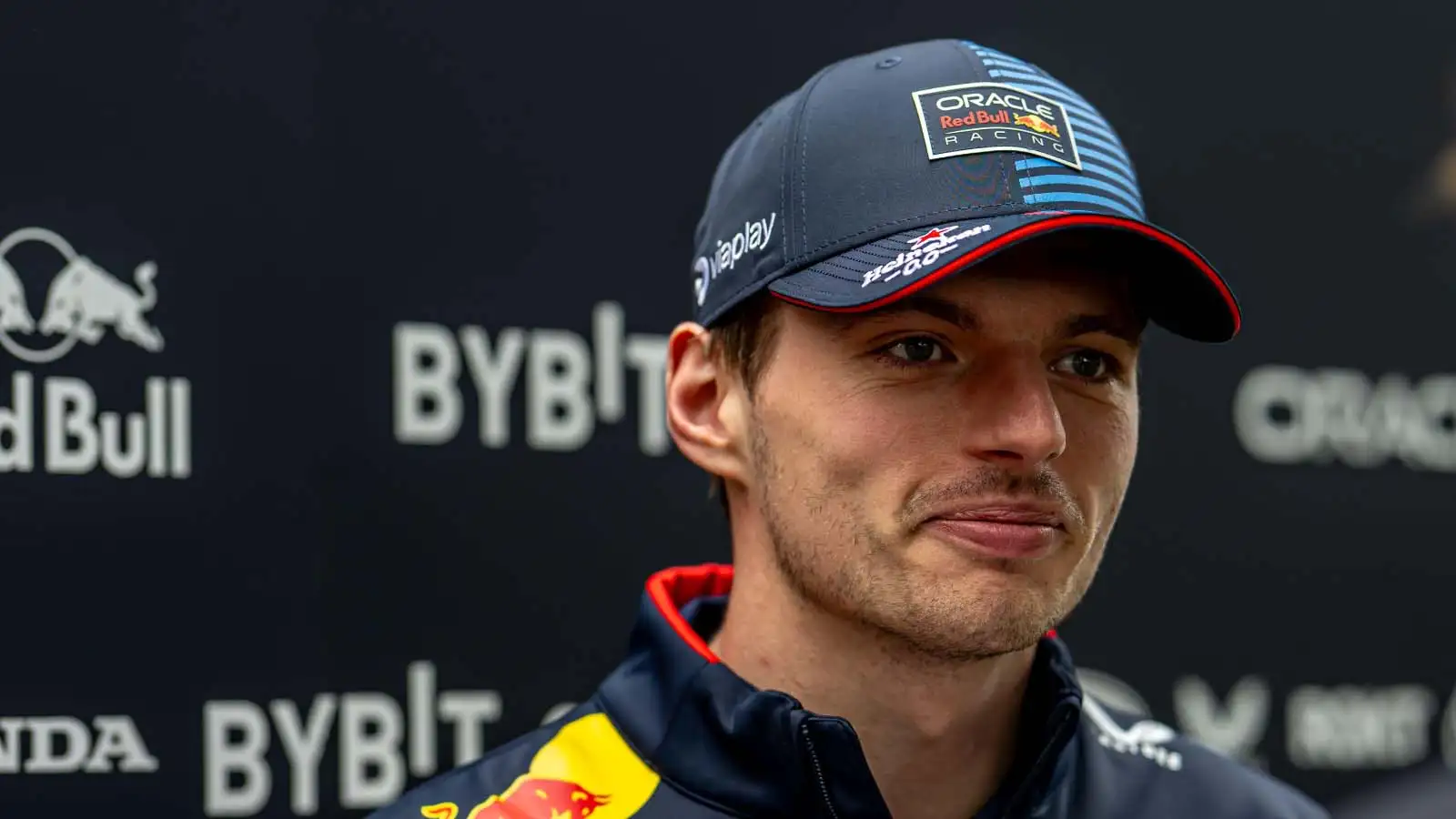Revealed: The Red Bull upgrades that helped Max Verstappen to Spain GP win

Red Bull's Max Verstappen goes by McLaren's Oscar Piastri.
Another race weekend, and another win for Max Verstappen – although it was far from easy. How big a role did Red Bull’s new upgrades play a part?
The return to the European leg of the Formula 1 championship provided an excellent opportunity for many teams to introduce upgrades and enhance their performance, or at least attempt to do so.
Red Bull and VCARB amongst teams to introduce upgrades
Among others, some of the most significant changes were seen at the VCARB, Red Bull, and Ferrari teams, although not all of them managed to translate these new parts into positive results. Let’s delve into the technical analysis of these teams’ upgrades.
Visa Cash App RB
The RB team had been in excellent form recently, consistently in battle for points since the start of the season. In Canada, the team demonstrated particularly strong performance after brilliant qualifying sessions, with both drivers finishing in Q3.
Returning to Spain was supposed to be another step forward, given the substantial upgrades they brought. However, things turned out differently.
Perhaps “new developments” is a better term since the team did not actually improve their car; in fact, they were notably slower in Spain than before. Yuki Tsunoda and Daniel Ricciardo finished P17 and P18 respectively after equally disappointing qualifying sessions on Saturday.
The Visa Cash App RB team introduced significant updates in their car’s design. Changes included the engine cover, sidepod inlet, sidepod geometry, rear wing, and floor.
The big RB upgrade has been spotted in the pit lane. "Almost everything is new, apart from the front wing and the beam wing", one engineer told us.
Find more close-up images in our AMuS gallery: https://t.co/VxUSYcErws pic.twitter.com/g7fP6eYBjW
— Tobi Grüner 🏁 (@tgruener) June 20, 2024
However, the most striking changes were on the car’s sides. The sidepod geometry was altered to direct airflow more efficiently over the top surface of the diffuser and the aero elements inside the rear wheels. Additionally, the lower edge of the sidepod inlet was extended – a trend we’ve seen since last year.
Engineers also reduced the projected surface of the front brake duct to better adapt to Spain and the reduced braking demands of this track.
Changes were also evident in the rear wing, part of the medium-high downforce package. The wing was reprofiled to generate load and drag more efficiently, tailored to the characteristics of the Barcelona circuit.
The most significant changes are underneath the car and, unfortunately, we can’t see how drastic they are. What is visible, though, are the altered floor edges that align with the main changes to the venturi channels beneath the car.
Despite all these upgrades, the car’s performance did not meet expectations. During qualifying, both drivers were near the bottom of the timesheets in all track sectors, as shown in the table below.

The reasons behind RB’s underperformance are unclear. The more pertinent question is whether the engineers even know what the problem is and where the solution lies.
It’s almost certain that the car’s setup was wrong and that significant improvement is possible in that area. With little time before the next race, we hope to see Tsunoda and Ricciardo back in the points battle.
More on the latest F1 news
👉 Aston Martin make huge statement of intent with big-name Ferrari signing – report
👉 Spanish GP driver ratings: Rare Lewis Hamilton score, Perez and Sargeant flop
Ferrari
Another team from whom much more was expected is Ferrari. Many anticipated Ferrari to be the main challenger to Max Verstappen, but the reality in Spain was that they were only the fourth fastest team.
Ferrari introduced two new types of rear wings over the last three races, with a completely new medium-high downforce wing for Barcelona. Compared to the wing used in Canada, this one had a greater lower flap angle, which is also deeper. This step was expected to produce slightly more drag, but overall, it was a better choice given the fast corners in Barcelona where downforce is crucial.
However, interestingly, this did not help Ferrari as they still lacked downforce. In the final qualifying corner, Leclerc had to lift off the throttle more than Red Bull, Mercedes, and McLaren.
Other major changes to the SF-24 are visible in the sidepods, especially underneath them. The sidepod lines have been altered, creating much more space between the lower surface of the sidepods and the floor edge.
This area of the car is aerodynamically challenging as several airflow streams converge here. Engineers are trying to guide the air through this region as smoothly as possible to avoid generating additional drag forces.
This comparison done by @formu1a__uno give us a much better look at the change to the side pod described in the previous slide. pic.twitter.com/GaVRYPKiYG
— brandon (@brakeboosted) June 21, 2024
In conclusion, Barcelona was a poor race for Ferrari, as evidenced by the race pace shown in the image below. It seems Ferrari needs a better understanding of these upgrades, and the fact that they have very little time before the next race does not work in their favour.

Red Bull
Another team that has been working hard at their factory is Red Bull. Competitors are getting closer to the team that looked uncatchable at the start of the season. However, in this case, it seems the upgrades are indeed working and delivering positive results.
Like Ferrari, the most noticeable changes are around the sidepods. However, Red Bull adopted a different philosophy by lowering the lower edge of the sidepods, thereby reducing the area to the floor edge.
For the #SpanishGP, #RedBull revised the sidepod inlet, more for aero goals than for cooling as stated (teams can run their car in the windtunnel as much as they want as long as it's for internal airflow). Narrower sidepods > more space for airflow to Coke bottle area#F1 #TechF1 pic.twitter.com/eslMxKi8J5
— nicolas carpentiers (@NicolasF1i) June 21, 2024
The inlet has also been redesigned to adapt to Europe and the warmer track temperatures expected in upcoming races. Engine cooling should be more efficient with fewer exit louvre openings.
Additionally, minor changes were seen on the rear wing endplates and the beam wing, aimed at increasing local downforce on these components.
Overall, the upgrades contributed significantly to yet another win for Max Verstappen.
However, an interesting fact is that in the last three races, we’ve had three different pole position winners, none of whom were Max.
As mentioned, competitors are now much closer to Red Bull, and the data confirms this. Roll on the next races!
Read Next: Spanish GP data: How Max Verstappen cooked against a quicker McLaren in Barcelona





